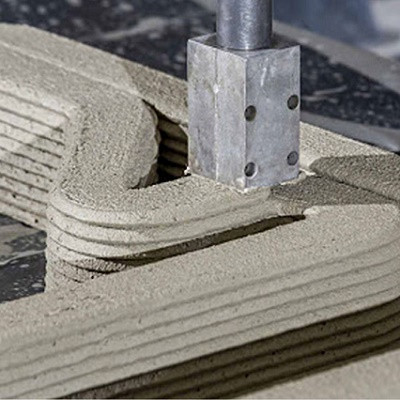
2020-07-16
Visited : 1539
In a joint study, the researchers from the Iran University of Science and Technology, Monash University, and Rice University have come up with an innovative induction-based cement 3D-printing method that allows for printing cementitious materials with 200% higher interlayer strength. This method has shown the potential to break new grounds in the construction industry.
Nowadays, 3D printing has attracted the attention of a wide range of industry owners and researchers as one of the emerging approaches of implementation in the construction industry. Considering its remarkable speed and accuracy in implementation, this method enables the preparation of structures with complex geometry and design without significant human labor, and therefore, as a method with unique capabilities holds a great promise to replace conventional construction methods.
Another considerable benefit of this method is its potential in employing concrete-based printers to provide affordable housing due to its quick and safe operation, especially for the management of post-disaster crises such as floods and earthquakes. However, the structures produced by these concrete printers suffer from weak integration and fragile connection between the layers. In this approach, the concrete layers are placed on top of each other and the time delay between the implementation of two adjacent layers and the presence of undesirable materials between the layers can reduce the strength of each section and make the final structure flimsy.
To address this challenge, the Iran University of Science and Technology’s researchers in collaboration with Rice University and Monash University have succeeded in developing induction-based cement 3D-printing method. The innovative approach introduced in this research enhances the interlayer strength in the 3D-printed cementitious materials up to around 200% aided by polymers.
In addition to the modulation of the effect of microcracks against external pressure, this method also promotes structural coherence, reaching even to the level of integrated behavior models.
The results of this research show that the interaction of calcium ions in cement and oxygen atoms in the added polymer is the main cause of strength improvement. The findings of this research have been published in ACS NANO.
Read the original article on INIC.